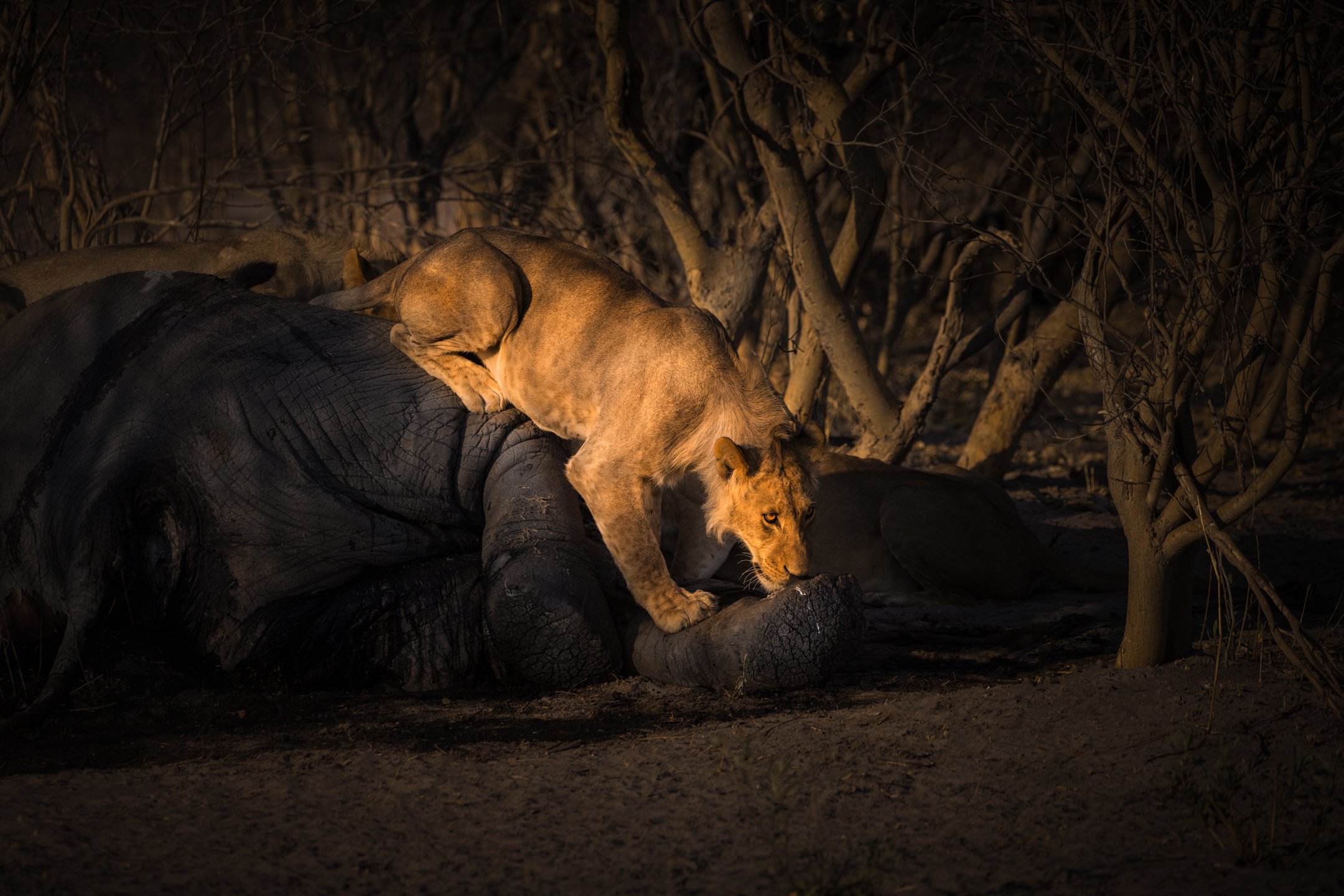5 FASCINATING FACTS ABOUT THE LIONS OF BOTSWANA
Botswana is a dream destination for wildlife lovers and photographers, and its lions are among the most captivating creatures roaming the African wilderness. Known for their power, social complexity, and elusive beauty, the lions of Botswana offer incredible photographic and wildlife viewing experiences. Whether you’re a seasoned wildlife photographer or a first-time safari-goer, here are five fascinating facts that bring these iconic big cats to life.
1. Botswana Has One of the Largest and Healthiest Lion Populations in Africa
Thanks to extensive protected areas such as the Okavango Delta, Chobe National Park, and the Moremi Game Reserve, Botswana boasts a lion population estimated at around 3,000 individuals. This makes it one of the last strongholds for lions on the continent. The country’s commitment to conservation and low human-wildlife conflict has allowed these apex predators to thrive better here than in many other African nations where lion numbers are declining.
The lions of Botswana’s Okavango Delta are big some of the most formidable big cats in Africa. Known for their impressive size and raw power, adult males here can weigh up to 250 kg (550 lbs) and stand as tall as 1.2 metres (4 feet) at the shoulder—noticeably larger than lions found in other parts of the continent. These muscular apex predators have adapted to the Delta’s challenging, waterlogged terrain, honing their strength and stamina through frequent hunts across marshes and islands. Their sheer presence is awe-inspiring, making them a true highlight for any safari or wildlife photography expedition in Botswana.
2. Complex and Unique Social Structures Define Botswana’s Lions
Lions are the only truly social cats, and the prides of Botswana exemplify fascinating social dynamics. Prides typically consist of related females, their cubs, and a coalition of males who defend the territory. What makes Botswana’s lions stand out is how male coalitions—sometimes brothers or unrelated males—work together to hold and expand their territory, often engaging in dramatic battles with rival coalitions. Females share duties in raising cubs and hunting, which increases the pride’s survival chances in the wild.
3. The Xudum Concession: A Window Into Lion Behavior
The private Xudum Concession, located within the Okavango Delta, is famous for its thriving lion populations and exceptional sightings. The relative seclusion of this concession means lions here are less disturbed by tourists and vehicles, allowing natural behaviors like hunting, mating rituals, and cub-rearing to be observed in vivid detail. Visitors often witness intense moments, from roaring territorial displays to affectionate bonding between pride members, offering unique photographic opportunities.
4. Adaptability to Seasonal Changes in the Okavango Delta
Botswana’s lion prides are highly adaptable to the unique environment of the Okavango Delta, a seasonal floodplain that dramatically changes throughout the year. During the dry season, lions tend to gather near permanent water sources, creating exciting chances to see multiple prides and other wildlife congregating together. In contrast, the wet season disperses prey across the flooded plains, requiring lions to adjust their hunting strategies and ranges. This adaptability makes each visit a different experience, depending on the time of year.
5. Conservation Efforts and Community Involvement Safeguard Botswana’s Lions
One of the most inspiring aspects of Botswana’s lion story is the effective conservation strategies that have helped stabilise and even increase their numbers. Government protection, strict anti-poaching laws, and the involvement of local communities through eco-tourism initiatives create a model of coexistence. These efforts help reduce human-lion conflicts and promote sustainable wildlife tourism, ensuring Botswana remains a sanctuary for lions and other iconic African wildlife for generations to come.
Why Photographers Love Botswana’s Lions
For wildlife photographers, Botswana’s lions present an ideal subject due to their relative abundance, behavior, and the stunning natural landscapes they inhabit. The varying light of the Okavango’s floodplains, combined with the lions’ dynamic social interactions, offers endless creative opportunities. Whether capturing a stealthy hunt at dawn or the golden glow of a lion pride resting under a marula tree, Botswana’s lions provide unforgettable imagery that tells a powerful story of wilderness and survival.
Ready to experience the magic of Botswana’s lions firsthand?
Join me on an exclusive photo safari where you’ll not only witness these magnificent big cats in their natural habitat but also learn how to capture their beauty through your lens. Spaces are limited to ensure an intimate, personalized experience — let’s create unforgettable memories and stunning wildlife images together.
Book your spot today and bring your lion photography dreams to life!
Please do not hesitate to contact me at info@drewsproule.com with any questions you may have.








